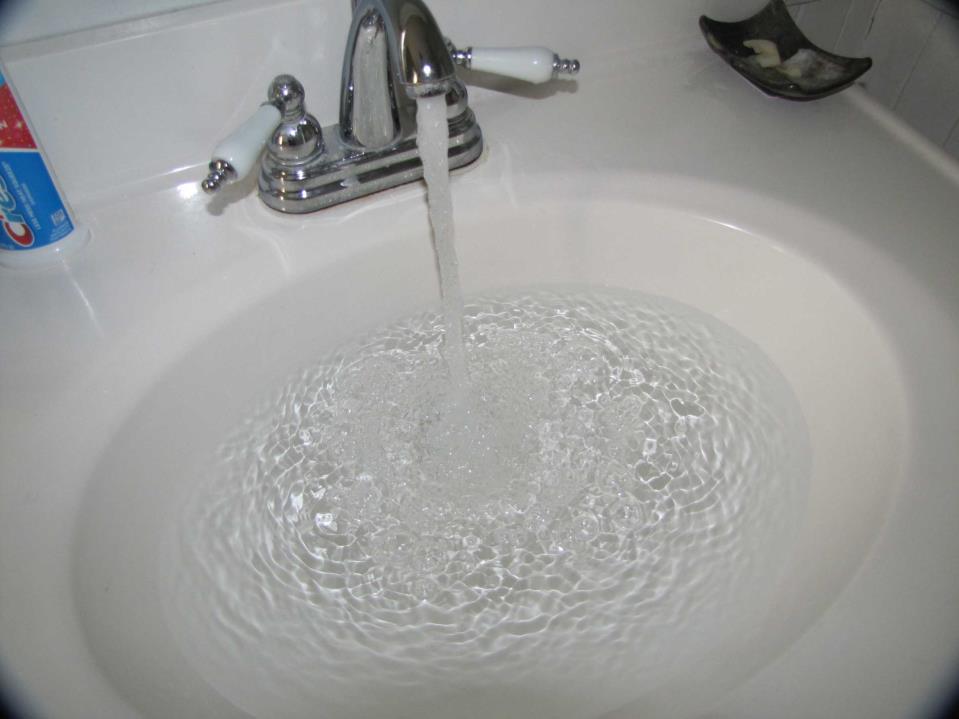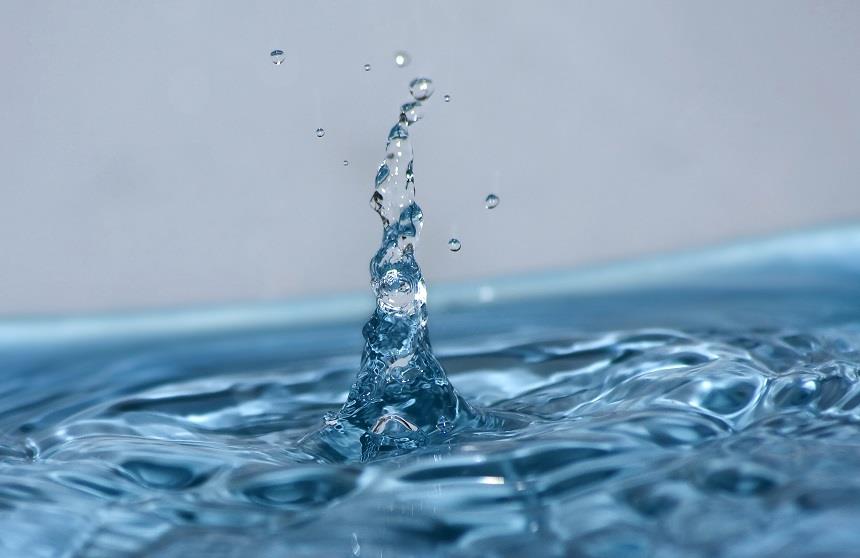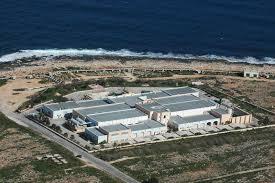In view of its very high virtual water imports, Malta is potentially exposed to water/food crises elsewhere in the world (prices of commodities such as food), for the simple reason that it is highly dependent on external water used to produce the food and goods the islands import, retired geologist Gordon Knox, who is one of the lead authors of a report on Malta’s dire water situation, said.
In a nutshell, Malta is highly dependent on food imports, making it highly vulnerable to any future global food price instability. Making a comparison, Dr Knox said: “What would have happened had not the Santa Marija convoy entered Malta some 73 years ago?”
Virtual water is defined as the total volume of water needed to grow and/or produce food, goods or services.
The report - published by a non-government organization, The Today Public Policy Institute – highlights the urgent need to address Malta’s water challenges. The two other lead authors are retired World Bank expert Lee Roberts and local hydrologist Ing. Marco Cremona. The report is titled ‘Why Malta’s national water plan requires an analytical policy framework’. It was launched a few days ago by Martin Scicluna – the Director General of the institute.

Dr Knox explained that back in 2004, when he started to take an interest on Malta’s water challenges, much emphasis was made on indigenous water issues. There was no recognition that water consumption on the islands only accounts for 8% of Malta's total water footprint. The other 92% is water consumed in other countries to meet Malta's import demands. Thus, for indigenous water, Malta is the most highly stressed of EU countries, and is one of the most stressed countries globally. However, it is also among the highest worldwide for dependence on external water.
With respect to virtual water contents of food and products, he indicated examples.
“It takes as much as 70 litres of water consumption bring an apple to market, which includes water to grow and to process it, such as washing it. A staggering 13,000 litres are used to produce 1kg of beef while a kg of wheat needs around 1,200 litres of water to produce. Around 11,000 litres of water is consumed to manufacture a pair of cotton jeans.”
Dr Knox said, most people only think of groundwater and reverse osmosis water when considering the total water needs of the islands. All indigenous sources including ground water, reverse osmosis water, limited sewage water recycling, rain water harvesting, direct sea water usage, and rainwater in the soil, are a long way short of satisfying the Malta's needs.
“Malta relies heavily on food and goods imports (virtual water imports) owing to its high density of population, very limited hinterland for growing crops, and very low sustainable per capita water availability,” he said.
Dr. Knox said that virtual water saves Malta. However, while it is to vulnerable to external water crises, it is critically important that Malta's indigenous water challenges are urgently tackled, he pointed out.

California’s ‘historic’ draught
As California faces a historic drought, more residents are looking to how they can cut down on their water use. Dr Knox explained that California supplies between 30% and 50% of America’s food, playing an outsized role in the country’s agriculture.
It grows one-third of the country’s vegetables and two-thirds of its fruits and nuts. That includes 99% of almonds, 95% of broccoli, 90% of tomatoes and 74% of lettuce.
If for instance, drought continues and California fails to deliver, then the USA, with its considerable buying power would seek replacements from foreign markets which would potentially escalate food prices globally, with immediate consequences for Malta considering its high external dependency on virtual water.
Is Malta running dry?
Malta has a water crisis. That much we know from last week’s news after findings of the report were published.
Dr Knox said that rather than stating that Malta is running dry, one can say that the aquifer is shrinking in size and fresh water depleting in volume, as more water is produced from it, than nature resupplies every year.
“Forecasting when it will be gone and replaced by sea water is difficult to say as considerable data is required to model its hydrodynamic behaviour. Additionally, while there are only indirect estimates on what agriculture is consuming from boreholes, nothing is known as to what other private borehole users are consuming.
“The fact that Malta has no direct measurement of how much unregulated water is being extracted by all users from private boreholes, including agriculture, bottling plants, bowsers, the building industry and private householders, is a matter of concern. It is likely to exceed the total amount of water produced annually from both the aquifer and RO plants by the WSC, which amounts to around 30 million cubic metres. “
When broken down, the amount the WSC produces is that of 14 million cubic metres of groundwater annually and 16 million cubic metres from reverse osmosis plants annually.
“Effectively, there are two tariffs in place: one for those who have meters in place, such as households, which are paying official tariffs to ARMS for their water supply while private boreholes with unregulated production of unknown volumes have no tariff,” he said.

He emphasised that the issue of who pays a tariff for water or not, or has subsidised water tariffs is a matter for government policy. However, government cannot determine such policy decisions, unless it has resolved data unknowns and carried out appropriate analyses.
Dr Knox further explained that if the aquifer continues to deplete, then Malta would have to at least double reverse osmosis production to meet all current demands, with a significant cost penalty to the consumer, plus increased carbon emissions.
Hydrologist Ing. Cremona recently made reference to the issue of boreholes as well. He told this newsroom that Malta is experiencing rampant extraction of water from private boreholes. Mr Cremona also highlighted that there are no controls in place to curb the actions of owners of boreholes who are extracting unquantified volumes of water. He called on the government to take action.
Major factor of water scarcity
Dr Knox emphasised that Malta’s water scarcity boils down to the fact that the country is densely populated and has very limited land and water resources.
“While the WSC fulfils part of this need, the total amount of water being extracted is greater than the rejuvenation of rainfall which seeps into the aquifer,” he said.
“Rainwater in soil is important for crops growth during wintertime but as the weather warms up during Spring and Summer there is need for heavy irrigation from boreholes,” he added.

How big a factor is pollution in water?
Turning to water pollutants – which, in Malta’s case, are mainly nitrates, he said that nitrate levels in the aquifer water are roughly double the amount permissible by the EU.
“The WSC brings down these nitrate levels to below permitted levels. This is done by mixing water produced by reverse osmosis plants with that of ground water in order to dilute the levels of nitrates found in water.
“A major source for the nitrates is the use of fertilisers, he said, dissolved by infiltrating rain water which seeps to the aquifer.
“Studies by the British Geological Survey found that it takes three to four decades for this water to reach the aquifer.
“The question here is whether the use of fertilisers increased over these last 40 years, since if so, pollution in the main aquifer will worsen,” Dr Knox highlighted.
Worthy of note is that report on water Dr Knox and his co-authors have penned, has emphasised the conclusions of earlier studies that the majority of aquifers in Malta are contaminated with nitrates.
Firework residue
Dr Knox referred to a report by expert Alfred Vella published early last week that highlighted household dust found in Malta has twice the level of perchlorate chemical used in fireworks as does China. This is a seasonal variation, there are higher concentrations during the summer months, correlating with firework activity, and lower in the winter months. He wondered if one of the main chemicals- perchlorate - may be infiltrating to the ground water. He also wondered if there are national or EU permitted regulatory levels for ground water, and if so is it measured by the WSC and what concentrations have been found.
The concern over perchlorate comes from its known interference with thyroid function Perchlorate is one of the more important chemicals used in fireworks.
WSC getting there in terms of reducing water wastage
Dr Knox pointed out that the report refers to the steady progress that WSC has made in curbing losses from its pipe networks amounting +/- four million cubic metres annually. He said that Malta is getting close to minimum water leakages – referring to the water supply network.
Government, Opposition’s committal
Dr Knox said that the Malta Water Association emphasised the nature of Malta's water challenges to political parties, and PL, PN and AD had all made a manifesto commitment to develop a national water plan before the last general election.
Subsequently, he said, the association held discussions with the government and Opposition and emphasised the water challenges needed cooperation from all sides since developing and implementing a water plan on a national level goes well beyond a government’s term in office.
But so far, he continued, the association has not received any direct feedback on what is actually happening in this regard. Nor have the authors of the TPPI report, he added.
When asked whether he feels Maltese and Gozitan people are realising the seriousness of the water situation, Dr Knox replied: “Generally, no.”
Concluding, Dr Knox said that there are a lot of unknowns and analyses had to be resolved in order to develop a national water plan.
Biography
Dr Knox graduated in Geology from the University College, London, and gained his Doctorate from the University of Liverpool working on the Andes of Peru. He had 28 years’ experience in the international oil and gas exploration business with Royal Dutch Shell. He lived and worked in various locations including The Netherlands, Nigeria, United Kingdom, New Zealand, Thailand, Sultanate of Oman and Australia.His positions included Research Geologist, Regional Geological Adviser and Exploration Manager. He retired from Shell in 1999.
In 2003, he was an International Distinguished Lecturer for the American Association of Petroleum Geologists on the topics of Risk and Uncertainty in Petroleum Exploration, and Ways of Working in Exploration; and also a Visiting Lecturer at the University of Malta in Applied Geology. Since 2004, he has developed a voluntary interest in Malta’s water situation and lectures and writes about the subject. He is one of the founder members of the Malta Water Association, formed in March 2011, a Fellow of the Geological Society (London) - a member of the American Association of Petroleum Geologists.